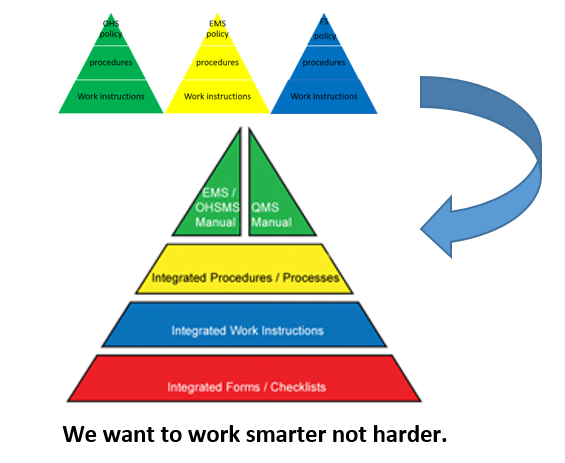We constantly complain about the number of standards we have to comply with. It’s an international problem. So finally we have a solution on the horizon for some standard. It’s the ISO HLS. We explain the acronym and what it means to you in practice.
We should all be familiar with ISO – the International Organisation for Standardisation. They write all those standards! Well it seems they have come to their sense. According to iso.org, they have just completed work to provide identical structure, text and common terms and definitions for management system standards of the future. This will ensure consistency among future and revised management system standards and make integrated use simpler. It will also make the standards easier to read and, in so doing, be understood by users – in theory. All technical committees developing management system standards have to follow Annex SL in the new consolidated ISO Supplement. Annex SL harmonizes structure, text and terms and definitions, while leaving the standards developers with the flexibility to integrate their specific technical topics and requirements. This will allow those of us who use the standards easier integration of multiple management systems.
Generally speaking, integrated management systems refers to integrated processes that result in one management system to implement ISO 9001, ISO 14001, OHSAS 18001 (the new ISO number will be ISO 45001) or food safety standards such as FSSC 22000.
Key changes: ISO’s high-level structure
The HLS shown below is the one adopted by ISO. This structure is common between ISO 9001, ISO 14001, ISO 45001 (the new OHSAS 18001 standard), and FSSC 22000. In other words, each of the standards requires an organization to understand the context of the organization, leadership, planning, and so forth. It won’t be difficult for implementers to understand that common requirements can be satisfied by the same process, i.e., one process could identify the “context” of the organization, and this context would apply to quality, environmental, health and safety, or food safety.
1. Scope
2. Normative References
3. Terms and Definitions
4. Context of the Organization
5. Leadership
6. Planning
7. Support
8. Operation
9. Performance Evaluation
10. Improvement
Source: High-level structure (HSL), from Annex SL, Appendix 2 of ISO/IEC Directives, Part 1—“Consolidated ISO Supplement—Procedures specific to ISO” (Sixth Edition, 2015)
Proliferation of standards and the cost of maintaining them
There are always more standards being thrown at the food industry. Typically these standards are implemented as stand-alone management systems with their own manuals, procedures, work instructions, forms, and checklists as well as their own process owners. The cost of implementing and maintaining these standards is becoming cost-prohibitive. You may even employ different specialists focusing on food safety, quality, environment, and health and safety. Consolidating these stand-alone standards into a single management system that satisfies all the requirements of the four standards will result in reduced documentation and processes to manage, which in turn saves costs in implementation and maintenance.

So what is an integrated management systems
Integrated management systems (IMS) conform to the requirements of quality management systems (QMS), environmental management systems (EMS), occupational health and safety management systems (OHSMS), and food safety management systems (FSMS). In his book Integrated Management Systems (ASQ Quality Press, 2015), Chad Kymal, a management systems expert, defines an integrated management system as having integrated processes, risk, and audits:
- Integrated processes are defined as management systems processes that are integrated to a large degree, i.e., greater than 70 percent, and have a common process owner between the QMS, EMS, OHSMS, and FSMS.
- Integrated management systems have integrated risks (i.e., a common risk methodology) between quality, environmental, health and safety, and food safety and have comparable severity and occurrence risk ratings between the categories. Optimally, one team conducts the risk analysis for the three different categories.
- An integrated audit uses one common audit process a1nd audit program for quality, environmental, health and safety, or food safety management systems in one site. The audit process uses an integrated audit checklist and an audit team capable of auditing the integrated system.
Stand-alone systems duplicate training processes, document control, and internal audit processes for each standard within the company. Therefore, there’s a tremendous loss of value associated with stand-alone management systems within an organization as discussed above.
Reducing process duplication within one organization is referred to as“integration,” and reducing duplication between sites is referred to as “standardization.” A key question one should ask before developing a new form or procedure: Will this make use more competitive? If this answer is no, then standardization will be the best option.
Key points to implement:
- Integrate internal audit procedure
- Integrate corrective action procedures
- Integrate document control procedure
Want to know more? Have a look at the HLS
Keep your eyes open for many more articles like this on practical integration.




